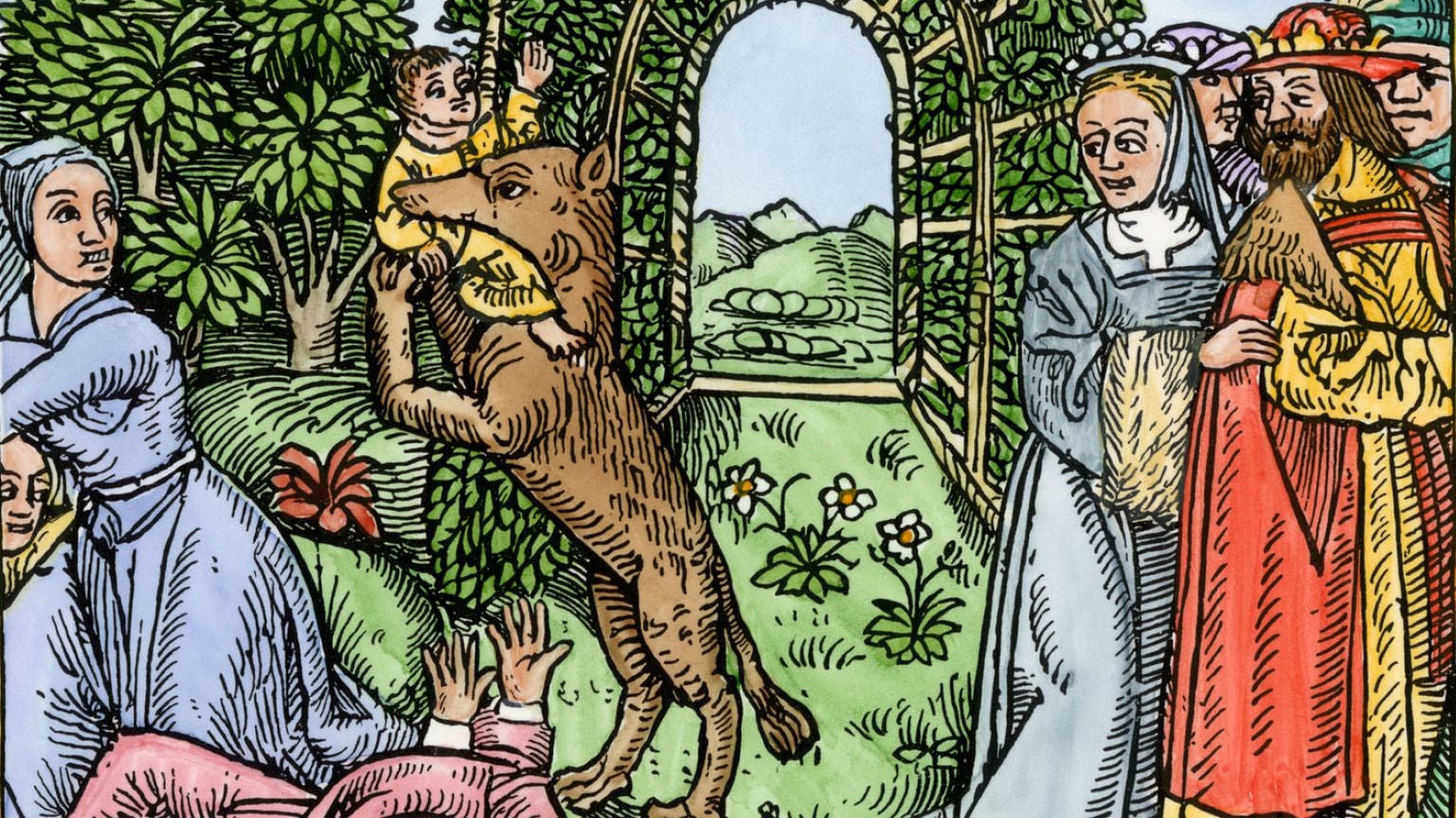Werewolf is the most sexist word in the English language
The political correctness movement has mostly zapped The Patriarchy from the English lexicon. These days, primly neutered chairpeople, fishers, and police have elbowed chairmen, fishermen, and policemen into obsolescence.


The political correctness movement has mostly zapped The Patriarchy from the English lexicon. These days, primly neutered chairpeople, fishers, and police have elbowed chairmen, fishermen, and policemen into obsolescence.
But “man” wasn’t always so butch. In fact, Old English mann primarily meant “human being.” So how did ye Old English-speakers know which bathroom to use? They used two words for man and woman: wer and wif.
For instance, via the Oxford English Dictionary, from the laws of King Alfred:
Gif oxa ofhnite wer oððe wif … (‘If an ox gores a man or a woman to death…’)
How a book on herbal medicine describes the Rogaine of yesteryear:
Þeos ylce wyrt gedeþ þæt ægþer ge wera ge wifa feax wexeþ. (‘This same plant causes the hair of both men and women to grow.’)
And from the book of Exodus, Old English edition:
Bete swa micel swa ðæs wifes wer gyrnð. (‘Let him give as much compensation as the woman’s husband wants.’)
Then, between the mid 1100s and late 1200s, those meanings started shifting.
“What happened in Middle English—between about 1150 and 1450 or so—was that, one, wer was eventually lost,” says Don Ringe, linguistics professor at the University of Pennsylvania, “leaving no word for ‘male human’ except the ambiguous mann.”
Unlike its male counterpart, however, wif lived on, gradually becoming restricted to its modern meaning of “wife,” says Ringe. To fill the more general female noun void, wifmann—literally “female-person”—emerged, turning into wimman, womman, wummon, and other variations as Middle English evolved. “Woman,” eventually, won out.
Only one word in English today still retains wer‘s original meaning: a compound word combining wer and wulf.
Of course, werwulf and today’s werewolf are slightly different; as Ringe observes, Old English speakers “don’t seem to have believed in female werewolves.”
However, werewolves almost exclusively were male, notes Sean Morris, an English literature professor at Whittier College. The concept was widespread in pre-literate Europe, he says, noting that references to lycanthropy (“wolf-man-ness”) pop up in the works of Herodotus, Ovid, Virgil, and Pliny the Elder, among others. Usually in these stories, says Morris, “the men do something inhuman—cannibalism or child-murder—and receive a curse from the gods.”
Then, for nearly a millennium, werewolves weren’t actually bad. Scandinavian traditions invoke them to celebrate battle prowess, and Arthurian furries were noble and chivalrous.
So when did our modern trope of uncontrollable bloodlust emerge?
“I think most of the modern werewolf traditions owe to the werewolf trials of the late Middle Ages, tied to the witch-hunting craze,” says Morris. In legal documents from the 15th through the 17th centuries, many were accused of changing themselves into wolves, then attacking and killing other people.
It’s only fairly recently that culture has equalized that opportunity—with True Blood’s fairer-sex werewolves, for example, or Veruca from Buffy the Vampire Slayer. Still, linguistic pedants would be right in arguing that the exclusively male wer root makes ”female werewolf” an oxymoron. So if we’re going to be gender-neutral about things, it’s probably time to embrace ”wolfman” instead.